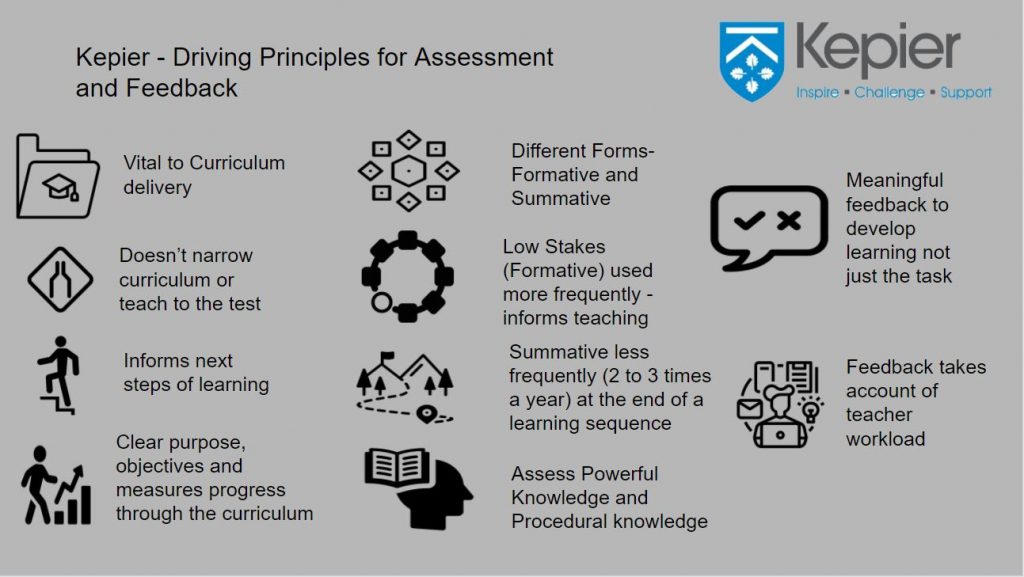At Kepier we believe that assessment is a vital part of supporting the delivery of our ambitious curriculum.
We believe that assessment should never narrow the curriculum by simply just ‘teaching to the test.’ Our teachers and leaders plan assessments carefully to ensure that they have a clear purpose whereby they can be used to measure the progress that our learners are making through their taught curriculum.
First and foremost assessment is used to inform classroom teaching and to carefully plan the next steps in learning.
Many people assume that ‘assessment’ means taking a test, but assessment is broader than that. There are two main types of assessment: summative assessment and formative assessment. These are sometimes referred to as assessment of learning and assessment for learning, respectively. At some level, both happen in almost all classrooms.
Formative Assessment
Formative assessments can be categorised as being a range of often less formal and ‘low stakes’ tests. These might be quizzes, multi-choice questions or knowledge counts tests. These will be the most frequent types of assessments used at key points within the curriculum and used to test the powerful knowledge that we want our learners to gain. These types of assessments will also be used to give our teachers the knowledge they need to plan the next stages of learning and correct common misconceptions that might occur.
Formative assessments will also be used to support retrieval practice where learners will be expected to recall past learning and knowledge.
Summative Assessment
Summative assessment can be described as a more ‘high stakes’ assessment that comes at the end of a sequence of learning. This type of assessment will be used less frequently and will be designed to assess learners’ knowledge and skills at key points in their curriculum. Summative Assessments will not only assess key knowledge and skills from the recently taught curriculum they will also revisit work done in past topics and even previous years. We always encourage our learners to revise and revisit knowledge that they have gained in past learning and they should expect this to be part of the summative assessment procedures that are important parts of their curriculum journey.
Although the assessment of key knowledge and skills is vital in the lead up to key assessments and examinations, we also believe that teaching learners the procedural aspects of examinations is also very important. By this we mean that learners will be explicitly taught how to approach an assessment or key exam. We believe that this will prepare learners well for examinations and give learners the opportunity to approach assessments with confidence.
Feedback
The feedback we give to learners has two main purposes. Firstly, learners can act on the feedback they are given and in doing so, close the gaps in their learning. Secondly, our teachers use the assessment and feedback given to learners to inform their future planning.
Feedback we give to learners will be focused on a certain task or skill and will highlight where improvements can be made. Learners can immediately respond to this feedback using a red pen and make the corrections to their learning.
Feedback should always be meaningful and focus on the next stages in learning. It will take account of teacher workload and will allow learners to make progress through their taught curriculum.
Individual departments/subjects have their own feedback policies that outline how feedback will look within their curriculum context.
The infographic below summarises Kepier’s driving principles for assessment and feedback:


